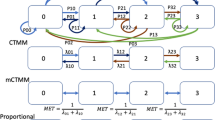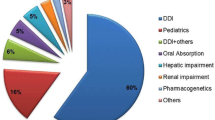Abstract
Trial simulations have emerged as a promising tool to optimize pediatric drug development programs. As the current FDA legislation on pediatric drugs and devices was updated to mirror the EMA legislation, pediatric programs must be developed with global strategies that support a Pediatric Investigation Plan (PIP) for the EMA and a Pediatric Study Plan (PSP) for the FDA. A pharmacometrics framework is proposed to support global regulatory strategies for pediatric drug development programs. The framework describes specific trigger points and opportunities for applying modeling and simulation techniques to design the PIP and PSP and ultimately optimize pediatric drug development programs. The development of pediatric protocols by simulations and execution plans is deemed critical in defining expectations and ensuring the future success of these global programs. This can lead to clinical trial designs that are more efficient, less prone to failure, and ultimately, less costly.
Similar content being viewed by others
References
Happu K, Hirschfeld S, Zajicek A. Comparison of the US and EU pediatric initiatives. In: Proceedings of WHO Expert Consultation on Essential Medicines for Children; July 9–13, 2007; Geneva, Switzerland.
Zisowsky J, Krause A, Dingemanse J. Drug development for pediatric populations: regulatory aspects. Pharmaceutics. 2010; 2(4):364–388.
US Department of Health and Human Services. Pediatric product development. FDA Safety and Innovation Act. Title V for pediatric drugs and devices. Food and Drug Administration Web site.https://www.fda.gov/Drugs/DevelopmentApprovalProcess/DevelopmentResources/ucm049867.htm. Accessed July 1, 2013.
Li JS, Eisenstein EL, Grabowski HG, Reid ED, Mangum B. Economic return of clinical trials performed under the pediatric exclusivity program. JAMA. 2007;297(5):480–488.
Benjamin DK Jr., Smith PB, Jadhav P, Gobburu JV, Murphy MD, Hasselblad V, et al. Pediatric antihypertensive trial failures: analysis of end points and dose range. Hypertension. 2008;51(4):834–840.
Lesko LF. The role of model-based drug development in paving the critical path. In: AAPS Workshop on Quantitative Clinical Pharmacology; November 10, 2007.
Food and Drug Administration. Challenges and opportunities report—March 2004. Challenge and opportunity on the critical path to new medical products. FDA critical path initiatives white paper. https://www.fda.gov/ScienceResearch/SpecialTopics/CriticalPathInitiative/CriticalPathOpportunitiesReports/ucm077262.htm. Published 2004. Accessed July 1, 2013.
European Medicines Agency. The European pediatric initiative: History of the pediatric regulation. https://www.ema.europa.eu/docs/en_GB/document_library/Other/2009/09/WC500003693.pdf. Accessed July 1, 2013.
Bellanti F, Della Pasqua O. Modeling and simulation as research tools in pediatric drug development. Eur J Clin Pharmacol. 2011;67(suppl 1):75–86.
Meibohm B, Läer S, Panetta JC, Barrett JS. Population pharmacokinetic studies in pediatrics: issues in design and analysis. AAPS J. 2005;7(2):E475–E487.
Barrett JS, Della Casa Alberighi O, Läer S, Meibohm B. Physiologically-based pharmacokinetic (PBPK) modeling in children. Clin Pharmacol Ther. 2012;92(1):40–49.
Wildt SN, Knibbe CA. Knowledge of developmental pharmacology and modeling approaches should be used to avoid useless trials in children. Eur J Clin Pharmacol. 2009;65:849–850.
Van Hasselt JG, van Eijkelenburg NK, Beijnen JH, Schellens JH, Huitema AD. Optimizing drug development of anti-cancer drugs in children using modelling and simulation. Br J Clin Pharmacol. 2013;76(1):30–47.
US Department of Health and Human Services. Pediatric product development. Pediatric study plan. Food and Drug Administration Web site. https://www.fda.gov/downloads/Drugs/DevelopmentApprovalProcess/DevelopmentResources/UCM338453.pdf.
US Department of Health and Human Services. Exposure-response relationships—study design, data analysis, and regulatory applications. Food and Drug Administration Web site. https://www.fda.gov/downloads/Drugs/GuidanceComplianceRegulatoryInformation/Guidances/ucm072109.pdf. Accessed July 1, 2013.
Jadhav PR, Kern SE. The need for modeling and simulation to design clinical investigations in children. J Clin Pharmacol. 2010;50:121S–129S.
Mouksassi MS, Marier JF, Cyran J, Vinks AA. Clinical trial simulations in pediatric patients using realistic covariates: application to teduglutide, a glucagon-like peptide-2 analog in neonates and infants with short-bowel syndrome. Clin Pharmacol Ther. 2009;86(6):667–671.
Läer S, Barrett JS, Meibohm B. The in silico child: using simulation to guide pediatric drug development and manage pediatric pharmacotherapy. J Clin Pharmacol. 2009;49(8):889–904.
Bhattaram VA, Booth BP, Ramchandani RP, Beasley BN, Wang Y, Tandon V, et al. Impact of pharmacometrics on drug approval and labeling decisions: a survey of 42 new drug applications. AAPS J. 2005;7(3):E503–E512.
Sheiner LB. Learning and confirming in clinical drug development. Clin Pharmacol Ther. 1997;61:275–291.
Author information
Authors and Affiliations
Corresponding author
Rights and permissions
About this article
Cite this article
Marier, JF., Mangum, B., Reid, B. et al. A Modeling and Simulations Framework to Support Global Regulatory Strategies for Pediatric Drug Development Programs. Ther Innov Regul Sci 47, 550–556 (2013). https://doi.org/10.1177/2168479013500289
Received:
Accepted:
Published:
Issue Date:
DOI: https://doi.org/10.1177/2168479013500289




